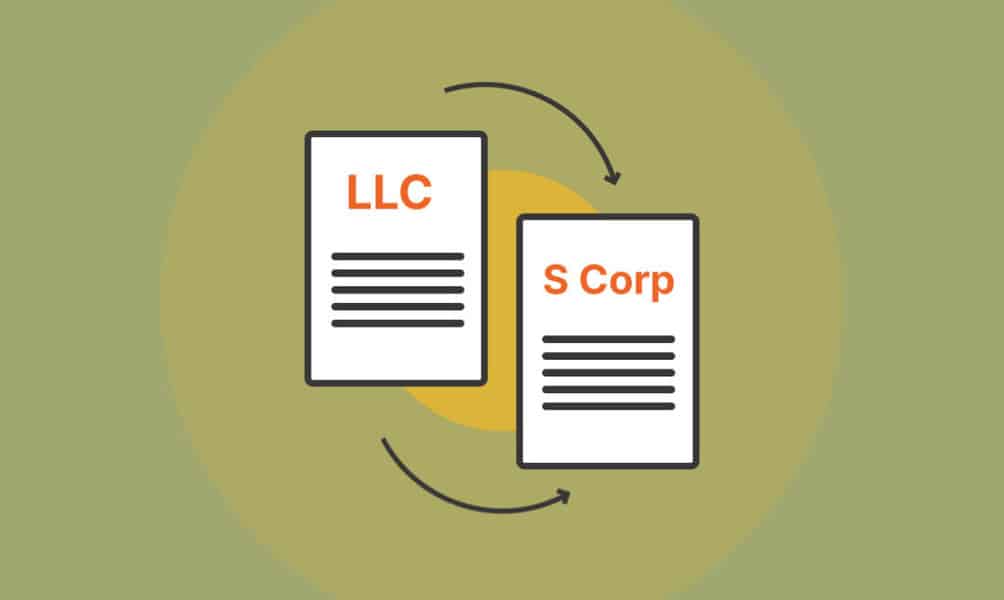If you’re starting an LLC, the business entity formation process is one of the first and most important hurdles. This step can be terribly complex ...
Single Member vs. Multi Member LLC
Written by: Carolyn Young
Carolyn Young is a business writer who focuses on entrepreneurial concepts and the business formation. She has over 25 years of experience in business roles, and has authored several entrepreneurship textbooks.
Edited by: David Lepeska
David has been writing and learning about business, finance and globalization for a quarter-century, starting with a small New York consulting firm in the 1990s.
Published on November 4, 2021
Updated on May 19, 2023

A limited liability company (LLC) is a U.S.-specific business entity with a structure designed to benefit its owner with tax advantages and, you guessed it, limited liability for the business’ activities. LLCs can have one or more members to share in the origination, ownership, and profit-sharing of the enterprise. LLCs are allowed in every state in the United States, though the laws and regulations around them may differ from state to state.
Freeing an entrepreneur from the burden of potentially sizable business debts and legal liabilities, an LLC helps business owners work without fear of losing their personal assets if something goes wrong. Additionally, LLCs are “pass-through” or “flow-through” entities, which means profit is taxed only after it passes through the LLC and into the owner’s control. Through this independent legal structuring, an LLC avoids the double taxation of a C corporation while retaining its limited liability status. LLCs are hybrid entities that offer some of the best qualities of both corporations and partnerships.
LLCs can be classified as either single-member or multi-member, depending on the number of owners, who are legally called “members”. Discussed below are the key differences, advantages, and disadvantages of running an LLC by yourself or with co-members.
| Single Member LLC | Multi Member LLC | |
|---|---|---|
| Definition | An LLC owned by one member. Similar to sole proprietorship, but with liability protection. | An LLC owned by more than one member. Similar to partnerships but with liability protection. |
| Ownership | Owned by one person or entity. | Owned by two or more people or entities. |
| Management | Typically managed by the single member, but can appoint a manager. | Can be managed by the members (member-managed) or by appointed managers (manager-managed). |
| Liability Protection | The owner's personal assets are typically protected from business debts and liabilities. | Members' personal assets are typically protected from business debts and liabilities. |
| Taxation | Default taxation is as a disregarded entity (like a sole proprietorship), but can elect to be taxed as a corporation. | Default taxation is as a partnership, but can elect to be taxed as a corporation. |
| Decision Making | All decisions are made by the single member. | Decisions are typically made by the members or managers, depending on the LLC's management structure. |
| Operating Agreement | Less complex as it only needs to outline the operations and decisions of one member. | More complex as it needs to outline operations, decision-making, and distribution among multiple members. |
| Succession Planning | If the owner dies or becomes incapacitated, the LLC might not survive without a succession plan. | With multiple members, the LLC can continue to exist even if one member exits. |
| Raising Capital | Limited options for raising capital. Usually relies on personal funds or loans. | More options for raising capital as funds can be raised from multiple members or investors. |
Deciding Between a Single and Multi-Member LLC
Ownership
Whether the LLC is formed and operated by a single member or more than one, it is considered a separate legal entity from its owner. This independence allows for the limited liability status, as the entity itself will be responsible for servicing its debt balance and facing any legal consequence from other liabilities.
A single-member LLC has one owner, or member, who has full control over the company’s structure, decisions, and profits.
A multi-member LLC has two or more owners who share control over the company. The level of decision-making control and profit-sharing is dependent upon an agreement between the members. This agreement is known officially as the LLC’s Articles of Organization and it is written by the members to establish their rights, powers, duties, and obligations. Ownership can be equally shared between members, or not — it’s up to the members themselves to decide. For the most part, the more people you involve in ownership, the more discussions and agreements the members will need to go through before finalizing the Articles of Organization.
An LLC can have an unlimited number of members (unless the entity is an S-corporation for tax purposes, in which case the maximum number is 100). Keep in mind that for tax purposes, a member cannot be treated both as a member and an employee of an LLC.
Management
An LLC with more than one owner can be either member-managed or manager-managed. In effect, this distinction allows for the LLC’s management to be shared cooperatively or placed mostly in the hands of a singular figure, like the CEO of a corporation.
In a member-managed LLC, all members take part in managerial duties and participate in the work of the business. Member-managed means that a majority of the members must approve loans, contracts, and other operational decisions. This is the default classification for LLCs; states consider an LLC member-managed unless otherwise stated in its formation documents.
A manager-managed LLC authorizes a manager, unanimously chosen by the members, to run the business. One member is elected to manage day-to-day operations and make major decisions, while other members are free to provide strategic advice and make financial investments into the entity. Manager-managed is typically chosen for an LLC when its business is complex or when certain members have less managerial experience.
Under either formation, an LLC operating agreement is usually created (though is not always required by states) to help members better understand their roles and responsibilities. The primary purpose of the document is to establish and govern the LLC’s member-level operations. Once signed, the operating agreement acts as an official contract binding all members to its terms. It also spells out what happens when members die or depart, when the LLC is dissolved, or when members come to an irreconcilable disagreement.
Personal Asset Protection
Both single-member and multi-member LLCs protect the owners’ personal assets from the transactions of the business. As an independent legal entity, the LLC frees the individual members from ultimate responsibility for the liabilities of the business. Members are only liable to the extent of their investment in the company.
If the LLC is sued or cannot service its debts, the counterparties to those relationships are unable to come after the members’ personal assets, such as a home, car, or valuables.
However, there are cases where LLC members might be held responsible beyond their investments into the business. For either single-member or multi-member formations, the LLC structure may not completely protect members’ personal assets: 1) If they have committed fraudulent or illegal actions; 2) If a member signs a contract guaranteeing personal responsibility for a liability (such as the collateral for a loan); or 3) If a member violates the terms of the LLC operating agreement.
In general, LLCs only protect members from good faith business conduct, not from illegality or misconduct based on the binding terms of the operating agreement.
Income Tax Treatment
One of the LLC’s major advantages is its ability to choose how it’s treated for tax purposes. An LLC’s tax entity options include:
- Sole proprietorship (for single-member LLCs)
- Partnership
- C Corporation
- S Corporation
By default, single-member LLCs are treated as sole proprietorships and multi-member LLCs are treated as partnerships. In either case, the LLC’s profits (or losses) flow through to the individual tax returns of the owner or owners and are not taxed at the LLC level. If an LLC is chosen to be treated as a C corporation for tax purposes, then it will be double taxed, at the entity level and the individual level.
A multi-member LLC does is a bit more complicated for tax purposes, as it must still file a tax return at the federal level and give each of its members a K-1 form to file alongside their individual returns. The K-1 form (IRS Form 1065) is titled the “Partner’s Share of Income, Deductions, Credits, etc.”
Even so, since the Tax Cuts and Jobs Act (TCJA) of 2017, pass-through entities such as LLCs – with one or more members – now qualify for a 20% deduction of their net business income on their personal tax returns. At the same time, each member of an LLC must pay self-employment tax on their share of the profits.
Formation & Compliance Requirements
Whether you are starting a single-member or multi-member LLC, the same general formation steps are required. The main steps include:
- Choosing a business name
- Designating a registered agent
- Filing Articles of Organization in your chosen state
- Creating an operating agreement
- Applying for an Employee Identification Number (EIN)
- Completing Entity Classification Election Form (IRS Form 8832)
Both types of LLC will require certain compliance actions over time in order to maintain its status as an operating legal entity. These required compliance tasks may include:
- Paying fees and taxes
- Creating an annual report
- Holding quarterly / annual meetings and documenting them with minutes
- Renewing required licenses and permits
- Maintaining company records such as: articles of organization, operating agreement, names and addresses of members, tax returns, bank statements, financial records
Single-member LLCs will have less complex tasks to complete and not all states require the same compliance duties. Failure to comply with a state’s LLC compliance obligations may result in fines, lawsuits, or suspension of business activities.
Do You Want a Single-Member LLC or a Multi-Member LLC?
The choice between operating as a single-member LLC or multi-member LLC will be up to you as the business owner. The most important advantages that LLCs provide a business owner – simplification of taxes and limited liability – are retained whether your LLC has one or several members. Managerial duties and the terms of each member’s responsibilities outlined in the operating agreement represent the most important commitments for a multi-member LLC setup.
Married couples, family-owned businesses, and friends going into business together generally end up choosing to go with a multi-member LLC for its efficiency, tax advantages, and collective limited liability status. Keep in mind, the designated members of a multi-member LLC can be individuals, other LLCs, or even corporations. Members can also be non-U.S. citizens.
Depending on your circumstances, you and your business partners could even create several single-member LLCs, instead of one multi-member LLC entity. The ideal formation will be up to you and your co-owners, as well as your spouse, lawyer, accountant and other stakeholders. In general, with more owners comes more complexity, documentation, and cooperation to run your business effectively.
Overall, the LLC is an entity designed to be flexible and fitted to your business needs, whether it has one member or many.
Single Member vs. Multi Member LLC
- Deciding Between a Single and Multi-Member LLC
- Do You Want a Single-Member LLC or a Multi-Member LLC?
Subscribe to Our Newsletter
and gain insider access to cutting-edge business insights and trends.
Featured Resources

10 Best LLC Formation Services
Published on August 22, 2022
Read Now

Single Member LLC vs. Sole Proprietorship
Published on February 15, 2022
If you’re starting a business, you may be trying to decide whether to operate as a sole proprietorship or a limited liability company (LLC). While ...
Read Now

How to Convert from an LLC to an S Corp
Published on December 7, 2021
At some point in your entrepreneurial journey, you may decide that having an S Corporation (S Corp) is more beneficial than a limited liabilitycompa ...
Read Now
Comments